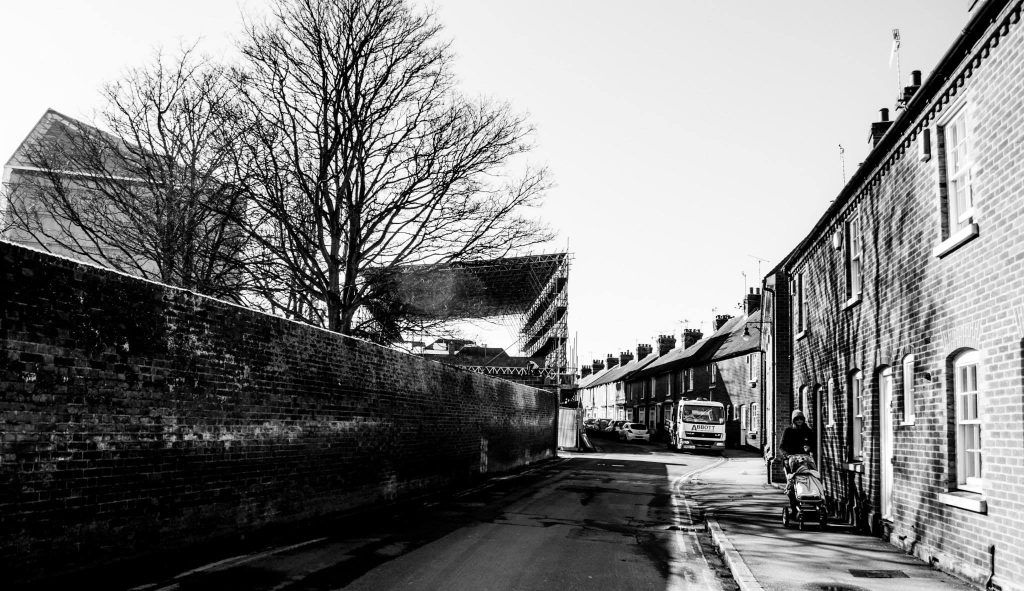Introducing Annual Land Value Taxation on Residential Land
Public references to land value taxation are becoming more frequent. A recent example appeared in the December 2015 Article IV report by the International Monetary Fund.
Property tax reform, along the lines recommended in the Mirrlees Review, could help reduce vulnerabilities in the housing market by easing supply constraints. For example, rebalancing taxation away from transactions and towards property values could boost mobility and facilitate more efficient use of the housing stock. Reducing council tax discounts for single-occupant properties could also increase the utilization of these properties.
This comment attracted little attention but it is another straw in the wind. Leaders must be increasingly aware of the need for full discussion on land value taxation, but are held back by a fear of losing votes. The purpose of this presentation is to suggest a politically acceptable way in which an annual levy on the value of residential land can be introduced.
Considerations
In round figures there are 25 million homes in England and Wales valued conservatively at an average of £200 thousand each, making a total of £5 trillion, the major part of all private assets.
In the absence of any separate public valuation of the land element included in the total, it is estimated to be £2.5 trillion. A reasonable estimate of rental value at 4% would therefore indicate a collectable amount of at least £100 billion. These figures are subject to a number of caveats. In particular, the realization that property values will be reduced as the tax increases will cause changes which cannot be reliably forecast. However, these figures do indicate the scale of the sums involved.
It is likely that there would be considerable resistance to the collection of £100 billion in land value tax even if there is a corresponding reduction in taxation on earnings. The temptation will be to mitigate its effect and various ideas have been suggested to deflect criticism.
1) A Homestead Allowance
A basic personal allowance on the grounds that everybody is entitled to a home is appealing but it would create anomalies. For example, would it vary according to local land values? Would joint owners, for example a married couple, receive double the allowance of the widow next door? How could relief be given on property occupied by one or more tenants? A personal allowance would be contrary to the basic principle that compensation paid to the community for land use should vary according to its annual economic rental value and not in accordance with the personal circumstances of the occupiers. The objective should be to enable everybody to provide their own home by their own efforts.
Furthermore, at personal allowances equal to a minimal £50 thousand per home on 25 million homes the total would be £1.25 trillion. This would so diminish the tax base, and consequently the tax revenue, that the Land Value Tax project would be dismissed as not worth the effort involved.
2) Charitable Relief
Those in genuine need of help must receive it. Land Value Tax fully levied would be sufficient to provide any necessary rebate. Charities could continue to help with transitional relief until government revenue is sufficient.
3) Social Housing and Affordable Housing
This is effectively a subsidy which eventually will not be needed. The reduction and possible eventual elimination of tax on earnings with the associated general improvements in the economy will make it possible for all to enjoy a home without subsidy.
4) Offering Citizens’ Income
A particularly attractive idea is to distribute all or part of any additional tax collected equally to every citizen, but this would prevent or limit the reduction of tax on earnings. Instead of the progressive unwinding of the welfare state which would result from the reduction of tax on earnings, the process of collection and redistribution would be made even more complex and inequitable. Earnings are taxed because the state does not collect Land Value Tax, its true revenue. The right policy is to reverse this process by collecting Land Value Tax and reducing tax on earnings. A citizens’ income could, however, be justified if Land Value Tax revenue eventually exceeded government expenditure, including necessary help to those in need.
5) Relief for Prepaid Rent
This is a real and continuing problem. The market price of landed property is the estimated present capital value of all future rent. An assessment to any land value tax on the purchaser of a home is therefore a second payment of the land element of rental value paid in advance at the time of purchase. If the purchase price is borrowed there will be the added burden of interest on the outstanding balance. There is clearly a pressing need for some form of relief. Unfortunately, there is no way of giving relief that would be fair to everybody. The only equitable solution would be to recover from the vendors the purchase price of the land and to recover from lenders the loan interest paid. This is obviously not an acceptable policy, even if it were possible. This unfortunate situation emphasises the need to introduce the tax gradually, possibly by instalments to correspond as far as possible with the reduction in taxation on earnings.The double assessment would be progressively less on future home purchases as prices gradually fall towards the price of the building only.

The Principle
The overriding objective when considering these and any other palliatives must be the eventual collection of the full economic rent of all land with the very minimum of exceptions. Comparable action in respect of commercial, industrial and agricultural land would proceed in parallel, with the object of creating a unified tax on annual land values.
Concessions would lead to unintended consequences that would produce an unfair result. If the objective is reduced to the idea of a contribution to the present taxation system based on earnings, the full benefit could not be realised and opposition would cause it to fail. It is a daunting prospect for politicians who must introduce it. The proposal needs to be:-
1) Fair, in the sense of being for the common good.
2) Simple and easy to explain.
3) Capable of being introduced gradually.
The Proposed Policy
It is tempting when introducing a new policy to scrap the existing arrangements and make a fresh start but there is merit in maintaining continuity. It would be better to retain initially that which is already accepted and make the necessary changes gradually. It is suggested that for residential land, Council Tax has the necessary attributes to act as the starting point. Council Tax has many detractors and is usually dismissed for what appear to be obvious reasons. However, it is suggested that there is a strong case for retaining it temporarily. The complete substitution of our present taxation system by the collection of the economic rent of land as the natural government revenue is a huge undertaking. It would need years of preparation before collection could start. It is quite possible to modify and improve Council Tax relatively quickly as the first step towards a comprehensive annual land value tax. The immediate benefits will hasten the work of introducing a unified annual land tax on all land. Abandoning it because of its apparent defects will unnecessarily delay the introduction.
The Practical Application
The main problems and advantages are summarised below.
Problems with Council Tax
1) Values and Bands
It is based on valuations made in 1991 which in many cases bear no relation to the current pattern of land values. Similarly, the current Council Tax bands are inadequate and more bands would be essential.
Properties have generally remained in the same bands and new properties are assessed on the basis of what their value would have been in 1991. This means that the council tax band widths have expanded in proportion to increases in property values. Residential property values are estimated to be at least three times the values in 1991 and therefore band widths must be at least three times the original widths. When multiplied by three, the top band now starts at £960 thousand.
However, the values are not the most relevant factor. It is the gradation of the band values that is relevant. Provided that the relationship of the bands to one another is still approximately in accordance with current values, the actual band values are not significant. It is true that there has been a progressively larger increase in the value of the land element of property in the higher bands so that there is a progressively greater undervaluation of property when using these modified 1991 values. It is also relevant that because of this trend, many higher value properties should be in a higher band. Despite this, the relative values of the individual bands still give an adequate comparison at the low rates of tax that will be charged initially.
2) Building values are included
Values include the buildings as well as the land.
This appears to be a valid objection but in general, the land element forms a higher proportion of the total value in the higher bands. This means that the higher bands will pay proportionately less tax for as long as total property value is the basis of assessment. The use of total value will ease the greater jump to current land values used for pure Land Value Tax.
3) Payable by Occupiers
It is payable by occupiers instead of owners.
It is probable that most of those who would pay more tax would also be owners. It is property let on leases and other tenancy agreements that will need special consideration. The situation will be the same with a pure land value tax. The first step will be to announce that for new leases and after the termination or rent review dates of current contracts, all future council tax will be the liability of the owner. Assessments will continue to be made on the occupier who will then deduct the tax paid from subsequent rent payments. While existing contracts remain in force, only the increases in tax payable would be deductible from the rent. The gradual reduction in income received by the owner will mirror the gradual increase in Council Tax payable by an owner occupier. The effect will be:-
The tenant, who benefits from the use of the land, will still pay the market rent. It will comprise the rent of the land plus the rent of the building. The Council Tax payable on the land rent will be offset by the corresponding reductions in taxation on earnings and the general economic benefits of annual land value taxation. The government will receive the Council Tax. The owner will receive the rent of the building plus the reducing rent of the land.
4) Council Tax is a local tax
The universal principle of collecting the economic rent of land as communal income cannot be reduced to the idea of a local tax.
This is a fundamental problem of any tax on the economic rent of land. The single source of revenue must provide for expenditure at all levels of government. The exact divisions will be the subject of consideration and debate. It would have to be tackled immediately if there was a direct switch from Council Tax to Land Value Tax and it is better to temporarily continue the existing procedures for the transfers from central to local government.

Advantages of retaining Council Tax temporarily
1) A familiar tax can be made fairer
It can be introduced with the simple statement that “We shall make Council Tax Fair” This positive proposal is far better than the announcement of yet another new tax. It would be more difficult for opponents of land value taxation to fault it. The existing band structure is still a fair way to assess the tax payable, as noted above, but at present it cannot be used directly because of a formula interposed deliberately to limit its effect. This formula, based on varying numbers of ninths of the amount payable at Band D, is rarely mentioned and its regressive effect is not generally appreciated. The lowest rate, which is for Band A properties, is fixed at six ninths of the Band D figure and the highest rate, which is for Band H properties, is fixed at eighteen ninths. This completely changes the relationship between the band values and the tax payable.
The effect is that whereas the top band value is at least ten times the lowest band value, the highest rate of tax payable is only three times the lowest rate. The rate of tax payable could easily be changed in a number of ways by arithmetical calculation to gradually bring the assessments into line with the band values. With Band D at the current average level of £1500, the tax payable on Band A is £1000 and the tax payable on the top Band H is £3000. A change to assessment on band values while maintaining the same total revenue would result in tax rates ranging from £600 on Band A homes to £7680 at Band H. 65% of homes are in bands A to C and all would pay less. Only those homes in higher bands would pay more. Changes could start immediately and continue progressively while the necessary discussions, laws and valuations for Land Value Tax are being made. Another practical advantage is that future Council Tax Bills could be sent out in their present familiar form. Many lower value homes are in deprived areas of Northern England. The lower rates of Council Tax would have an immediate beneficial effect and reduce the dependence on council tax benefits which at present total over £4 billion annually. The expectation of reduced tax on earnings and the wider economic benefits of annual land value taxation would be an immediate boost for the Northern Powerhouse project.
2) Possibility of an immediate increase in Revenue
Having established the principal of fairness, the general rate could at the same time be gradually increased. An increase of 25% in tax rates on all bands would yield over £8 billion per annum in extra tax which could be used to eliminate Stamp Duty Land Tax and/or to reduce taxes on earnings. At this higher rate, over 10 million homes in bands A and B would still be paying either less or only slightly more Council Tax than at present It would also be possible to move towards a uniform rate of Council Tax as a step towards the ultimate unified rate of Land Value Tax on all land.
3) Revaluation
Maintaining the Council Tax obviates the need for an immediate valuation of all land, which would be necessary for the introduction of a pure land value tax. Revaluation could be started on the higher bands, assessing both the whole property and the land only. This would allow the organization and expertise to be built up gradually. The higher values would be an indication of and preparation for increases in tax payable. If it was decided to apply the increased council tax assessments immediately, two or three additional bands could be declared. When it is decided to introduce pure Land Value Taxation, the land valuation could be speeded up, using modern techniques.
4) Financial Policy
Property prices would be likely to adjust more gradually than if Land Value Tax were to be introduced without a preliminary stage. This would limit the effect on the banking system.
5) Mansion Tax
The inherent fairness would make it more difficult to condemn it as an extension of the derided ‘Mansion Tax’
6) Property Improvements
By up-dating the band values in proportion to the 1991 values, all subsequent building improvements would remain tax-free
7) Land held out of use
The knowledge that tax payable on completed developments will steadily increase will of itself reduce the value of vacant residential land including building plots held by property companies. This will be sufficient to hasten the building programme in order to avoid the loss. It would be unduly disruptive to introduce Council Tax on vacant land immediately.
Conclusion
Council Tax should not be abandoned but should rather be retained and modified as a simple and easy to understand introduction to a pure comprehensive Land Value Tax. The proposed gradualist approach would appeal to politicians who understand the advantages of taxing the unearned benefit received by landowners rather than the earnings from the work that produces the real wealth. They would understand that it could quickly attract the attention of young aspiring workers and gain their energy and enthusiasm to hasten the process – and also gain their votes.
Every journey has a destination that does not change despite all twists and turns, delays and deviations. So must the recovery of the economic rent of land for the people be the unalterable final destination. The use of Council Tax is an immediately available practical way of starting the necessarily long process. Clarity on the ultimate objective will steer the project through all temporary difficulties. A modified Council Tax can lead naturally to a pure annual land value tax and economic justice for the common good.





